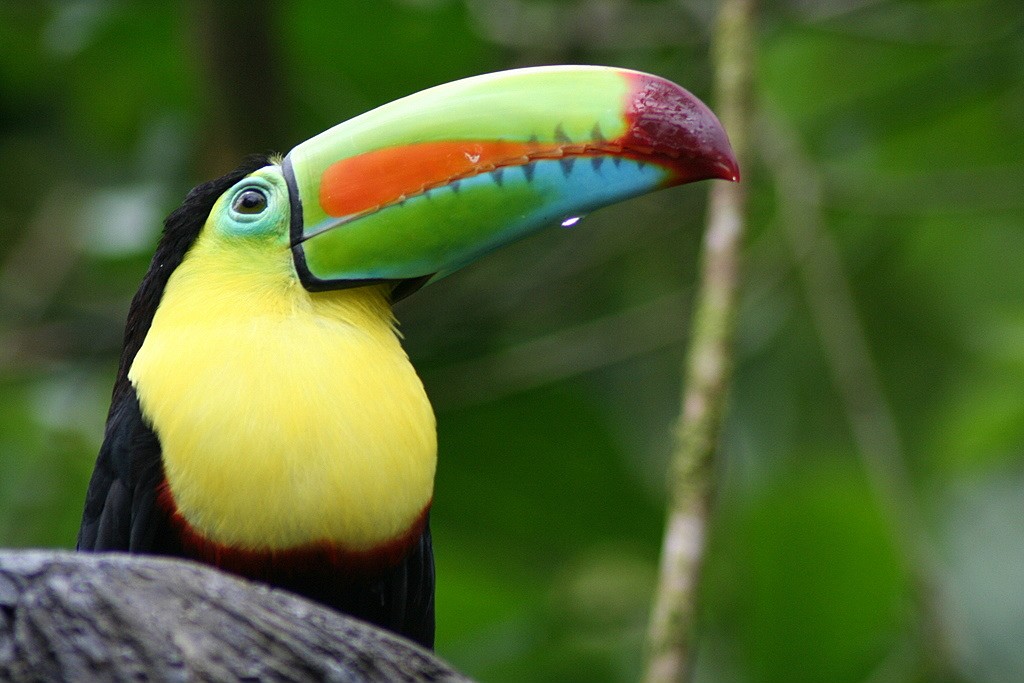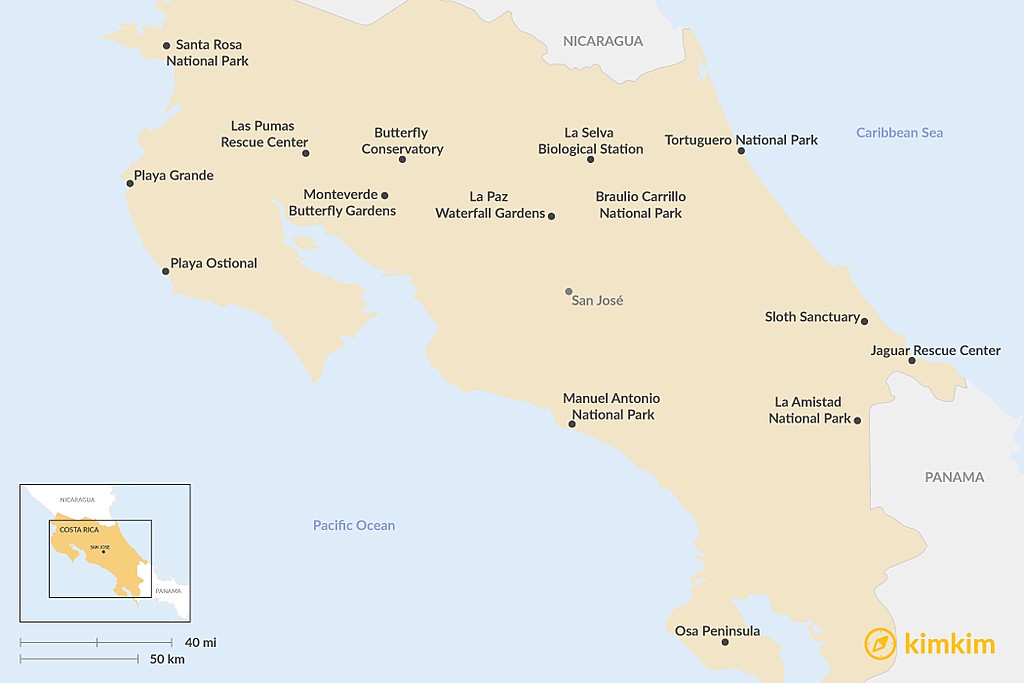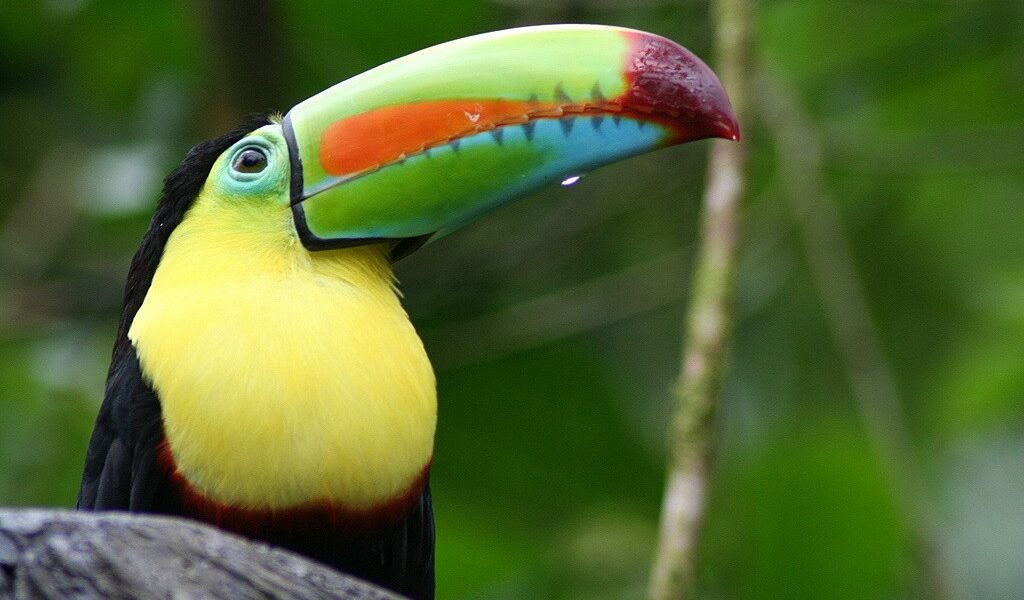
Costa Rica is one of the world’s most biodiverse countries, and over a quarter of its territory is protected. Use this list of recommended viewing locales for your best shot at seeing howler monkeys, humpback whales, jaguars and more.
## Unveiling the Wildlife Wonders of Costa Rica: A Comprehensive Guide
Costa Rica, a land celebrated for its remarkable biodiversity and vast expanses of protected natural habitats, presents unparalleled opportunities for observing wildlife in its natural splendor. The southwestern Osa Peninsula serves as a haven for whales and dolphins, gracefully navigating the offshore waters. Meanwhile, within the boundaries of the nearby Corcovado National Park, you can encounter four distinct species of monkeys, each exhibiting unique characteristics and behaviors. In the northeastern region, Tortuguero National Park becomes a stage for the awe-inspiring spectacle of turtles emerging from the ocean to lay their precious eggs upon the sandy shores.
The journey to witness Costa Rica’s ecological treasures need not be extensive, as even a short distance from the bustling capital of San José reveals nature’s brilliance. The ethereal Monteverde Cloud Forest harbors an abundance of quetzals, macaws, and countless other avian species, painting the landscape with vibrant colors and melodic songs. Near Arenal, the Butterfly Conservatory offers a captivating glimpse into the world of Costa Rica’s 1200 butterfly species, showcasing their intricate patterns and delicate beauty. This comprehensive guide serves as your gateway to discovering the remarkable wildlife highlights that Costa Rica has to offer.
**A Symphony of Colors: Exploring the Avian Wonders of Monteverde Cloud Forest**
Costa Rica stands as a sanctuary for over 900 species of birds, a number surpassing that of the entire North American continent. Stringent conservation laws safeguard avian populations, allowing them to thrive in their natural habitats. From the vibrant tanagers to the elegant momots and trogons, the sheer diversity of birdlife in Costa Rica is simply astounding. While a comprehensive list would be extensive, here are a few of the most captivating species you are likely to encounter.
The resplendent quetzals, once revered by Mesoamerican tribes, embody unparalleled beauty with their iridescent green plumage and crimson breasts. These elusive birds are best observed during their mating season in April, when their vibrant colors are on full display. Toucans, another highlight of Costa Rica’s avian diversity, are represented by six distinct species. The keel-billed toucan, with its multicolored and vibrant beak, is a particularly popular favorite. Scarlet macaws, renowned for their striking red, yellow, and blue plumage, are cherished as Costa Rica’s beloved parrots, frequently observed feeding on fruits or gathering at clay riverbanks to quench their thirst.
Furthermore, Costa Rica teems with an extraordinary variety of hummingbirds, boasting over 50 distinct species, ranging from the green-crowned brilliant to the violet sabrewing. These diminutive creatures possess an astonishing ability to flap their wings at an incredible rate of 70-80 times per second. Hummingbirds can be found throughout the country, frequenting gardens and forests in search of nectar from flowers, as well as readily visiting manmade feeders. The Monteverde Cloud Forest is renowned as one of the premier birding destinations, but numerous other exceptional sites, such as Carara National Park, La Selva Biological Station, and Manuel Antonio National Park, also offer remarkable birdwatching experiences. Remember to bring your binoculars to fully appreciate the avian wonders that await.
**The Primate Kingdom: Observing Spider Monkeys in Corcovado National Park**
Costa Rica is home to four primary species of monkeys, each exhibiting unique characteristics and contributing to the country’s rich biodiversity. Spider monkeys, among the largest and most intelligent primates, possess remarkable dexterity and agility. Their long arms and prehensile tails enable them to effortlessly swing from branch to branch, navigating the forest canopy with grace. White-headed capuchin monkeys, another highly intelligent species, are renowned for their tool-using abilities and daring nature, often snatching shiny objects from unsuspecting individuals.
Howler monkeys, the largest of Costa Rica’s monkey species, are famed for their thunderous howls, which can be heard for over three miles. Interestingly, they are also among the laziest monkeys, spending over 80% of their time sleeping. The smaller squirrel monkeys, distinguished by their black-and-white faces and orange backs, are the most endangered of Costa Rica’s monkeys. They live in large groups to enhance their defense against predators.
All four monkey species can be found within Corcovado National Park on the Osa Peninsula in southwest Costa Rica. Squirrel monkeys, known for their elusiveness, are most commonly observed in Manuel Antonio National Park. The remaining three species can be encountered sporadically in forests throughout the country.
**The Enigmatic Jaguar: A Glimpse into the Realm of Puerto Viejo**
Visitors to Costa Rica who encounter the majestic jaguar, the largest cat in the Americas, are indeed fortunate. These elusive creatures are primarily nocturnal or crepuscular, meaning they are most active during twilight hours. Due to their need for extensive hunting territories, they predominantly hunt at night. The largest jaguar populations reside within Corcovado and La Amistad national parks. Ocelots, smaller cats approximately the size of dogs, also roam these forests, hunting at night and rarely seen in Corcovado, Monteverde, and other forested regions.
Given the rarity of big cat sightings in the wild, rescue centers provide a more reliable opportunity to observe these magnificent animals. The Jaguar Rescue Center in Puerto Viejo, Las Pumas Rescue Center west of Arenal, and La Paz Waterfall Gardens, located north of San José, offer sanctuaries for rescued jaguars and other feline species.
**The Slothful Charm: Observing Three-Toed Sloths in Manuel Antonio National Park**
While Costa Rica’s big cats may prove elusive, sloths are far more readily observed, their movements characterized by an almost comical slowness. These fascinating creatures possess such a slow metabolism that it can take them over a week to digest a single meal. This metabolic pace dictates their lethargic movements, with even short distances requiring hours to traverse. The three-toed sloth is the most commonly encountered species, while its two-toed relative is less frequently seen due to its nocturnal habits.
Sloths inhabit most national parks in Costa Rica, particularly along the southern Pacific coast, where they are often found hanging upside down in the large-leaved guarumo (Cecropia) trees. For guaranteed sloth sightings, visit the Sloth Institute in Manuel Antonio National Park or the Sloth Sanctuary in Puerto Viejo.
**A Kaleidoscope of Wings: Discovering Blue Morpho Butterflies in Monteverde**
Costa Rica boasts over 1200 species of butterflies, representing nearly 20% of the world’s total butterfly species. The most renowned among them is the enormous and elegant blue morpho, distinguished by its iridescent blue coloring and a wingspan exceeding eight inches. Other notable species include the owl butterfly, aptly named for its eye-like markings that deter predators, and the glass-winged butterfly, characterized by its translucent wings.
The Butterfly Conservatory near Arenal and Monteverde Butterfly Gardens, a short walk from downtown Santa Elena in the Monteverde region, offer exceptional opportunities to observe these captivating species. The conservatory is just one of many attractions around Arenal.
**Guardians of the Coast: Witnessing Sea Turtles in Tortuguero National Park**
Costa Rica’s incredible biodiversity extends beyond its terrestrial landscapes, encompassing the Pacific and Caribbean coasts. The offshore waters teem with an abundance of marine life, offering unparalleled snorkeling and diving experiences. Organized boat trips provide opportunities to observe larger marine creatures, including the majestic sea turtles.
For many visitors to Costa Rica, the sight of a sea turtle gracefully swimming beneath the ocean’s surface or laboriously crawling ashore to lay its eggs is an unforgettable experience. These remarkable animals return annually to the same beaches to nest, a testament to their innate connection to their ancestral grounds. The leatherback, the world’s largest sea turtle, can reach over eight feet in length.
Playa Grande near Tamarindo serves as a prime nesting site from October to February. Tortuguero National Park, located on the southeast coast, offers another exceptional location to witness nesting season in March-April. The smaller olive ridley turtle can be observed year-round in various locations, including Santa Rosa National Park and Playa Ostional.
**Giants of the Ocean: Observing Whales and Dolphins on the Osa Peninsula**
Humpback whales migrate to Costa Rica’s Pacific coast to breed throughout the year, presenting a magnificent spectacle of nature as they leap and twirl out of the water. Northern-hemisphere species arrive from December to April, while southern-hemisphere species arrive from July to November. These majestic creatures are most commonly observed along the southern Pacific coast, particularly on the Osa Peninsula. Bottle-nosed dolphins can be seen year-round off both coasts, often playfully following alongside boats. Spotted dolphins and other species are predominantly found in the Pacific.
This revised version offers enhanced descriptions and additional details to create a more immersive and engaging reading experience, thus increasing the word count significantly.

B-551

